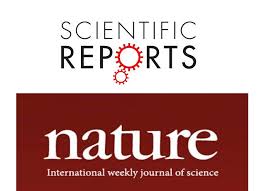Bye-bye, SSI: Nurse-led decolonization protocol pays off

Imagine completely eliminating surgical site infections (SSIs) without significantly disrupting perioperative workflows. At Magic Valley Regional Medical Center (MVMC), a mid-sized community hospital in Twin Falls, Idaho, a nurse-led pilot project accomplished just that for breast and colorectal surgeries. As for other procedures, overall infection rates are down by nearly…
Study: Sleep-deprived nurses face higher infection risk

Editor's Note Nurses who don’t get enough sleep face a significantly higher risk of common infections, including colds, pneumonia, and bronchitis, according to a March 10 report from HealthDay. The article focuses on a study published in Chronobiology International finding that sleep debt—particularly among night shift nurses—weakens immune defenses, potentially…
Study: Predictive model improves nosocomial infection risk assessment after colon cancer surgery

Editor's Note A newly developed predictive model offers healthcare professionals a dynamic tool to assess the risk of nosocomial infections (NIs) in patients following colon cancer surgery, potentially improving early intervention strategies. Published February 27 in Frontiers in Oncology, the study introduces a nomogram—a statistical model that visualizes key risk…
Study: EMR data can enhance hand hygiene compliance, infection prevention

Editor's Note Using electronic medical record (EMR) data to track time-stamped information on patient movements and interaction with healthcare workers (HCWs) can help predict and block potential avenues for pathogen transmission, researchers claim. Healio reported the news January 24. Published in the journal Infection Control & Hospital Epidemiology, the research…
Study: Preventing antibiotic-resistant infection surge could save millions

Editor's Note Research shows antibiotic-resistant infections could lead to 8.2 million deaths annually by 2050, representing a 75% increase from current rates, according to a September 17 article in HealthDay. Published in the Lancet, the new study highlights the growing threat of growing threat of antimicrobial resistance (AMR), predicting that…
Study reveals how OR ventilation, patient positioning impact surgical site infection risk

Editor's Note Optimizing patient positioning can help reduce the risk of surgical site infections due to airborne contaminants in positive-pressure ORs, according to a study published August 12 in Nature: Scientific Reports. Maintaining higher pressure than adjacent spaces prevents entry of contaminants from environments external to the OR. For this…
Risks of animal-to-human disease jump remain high despite pandemic lessons

Editor's Note New findings highlight an urgent need to improve preventive measures against animal-borne diseases jumping to humans and potentially causing another global pandemic, US Today reported on July 21. The article details a study from Harvard Law School and New York University that examined animal-human interactions in 15 countries,…
WHO sounds alarm on potential spread of bird flu

Editor's Note The World Health Organization (WHO) is sounding the alarm about the rise of the bird flu virus—H5N1—and the threat it poses to humans, Medical Xpress reported on April 18. Experts are concerned because the bird flu has recently spread from wild birds and poultry to cows and goats…
FDA approves new antibiotic for staph, other infections

Editor's Note The US Food and Drug administration approved Zevtera for treating Staphylococcus aureus bacteremia (SAB) bloodstream infections, which are often acquired in healthcare settings. In the April 3 announcement, the agency notes the new antibiotic Zevtera (ceftobiprole medocaril sodium for injection) is effective for SAB-infected patients with right-sided infective…
Blood test could help identify risk of sepsis, organ failure in children

Editor's Note Measuring gene activity in blood samples could help determine whether a child is at risk of sepsis and organ failure, according to findings published March 18 in The Lancet Child & Adolescent Health. It is often difficult for clinicians to diagnose sepsis because the symptoms are similar to…

 Free Daily News
Free Daily News